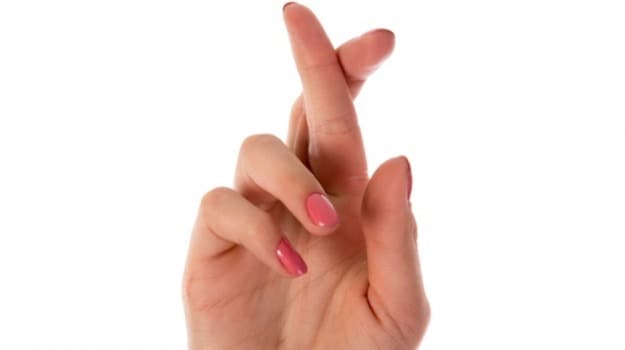The new discovery might eventually be used help patients suffering from chronic pain. Photograph: Tromp Willem van Urk/Alamy
UCL scientists find that crossing the fingers can confuse the way the brain processes sensations - reducing pain in some cases.
Next time you hit your finger with a ill-judged strike of the hammer, cross your fingers, scientists suggest.
A study has found that crossing the fingers can confuse the way the brain processes feelings of hot, cold and pain – in some cases reducing painful sensations.
Scientists believe the phenomenon could ultimately be harnessed to help treat chronic pain patients, who suffer from painful sensations, often long after a physical injury has healed.
Professor Patrick Haggard, the study’s senior author at University College London, said: “Interactions like these may contribute to the astonishing variability of pain. Our research ... raises the interesting possibility that pain levels could be manipulated by moving one part of the body relative to others.”
Rather than subjecting their experimental participants to conventional pain, the authors used a trick known as the thermal grill illusion to create a phantom pain sensation. The illusion works by applying a warm sensation to the index and ring fingers and a cold sensation to the middle finger.
In the experiment, the researchers used thermal pads strapped to the fingers, although the same result can be achieved by dipping fingers in two mugs of water.
The grill-like pattern of hot-cold-hot is known to create a burning sensation in the middle finger – similar to that evoked when warm water is poured on feet that are numb with cold. About half of people go as far as describing the feeling as painful. The illusion works because the hot sensation in the outer two fingers blocks the activity in a certain cooling receptor under the skin and this “inhibition” spills out to the surrounding area of the hand.
Activity in the cooling receptors in turn normally blocks the activity of pain receptors that are sensitive to extreme cold. As a result only mild cold is now needed to produce a painful burning sensation in the middle finger – hence the illusion.
“It’s like two minuses making a plus,” said Elisa Ferrè of UCL and a co-author.
“This can certainly feel painful, but doesn’t actually involve any tissue damage,” added Angela Marotta, also of the university.
Professor Giandomenico Iannetti, a pain specialist at UCL who was not involved in the work, said that just as optical illusions can be designed to trick the brain, scientists are learning that the same can be true for painful stimulus. “Perceptions are constructed in the brain with the objective of selecting the most useful features in the world around us,” he said. “This is why sometimes perceptions do not accurately reflect the sensory input. Pain is a perception often only loosely related to the actual noxious sensory input.”
The latest study showed that this feeling of pain vanished when the subject crossed the middle finger over either the index or ring such that it was no longer in the middle. The study, published in Current Biology, also showed that the painful illusion could be restored when the index or ring fingers were given the cold stimulus, as long as the target finger was crossed into the middle. This suggests the brain uses the position of the finger in space, rather than the position on the hand, when it processes the incoming signals from each digit.
“The brain seemed to use the spatial arrangement of all three stimuli to produce the burning heat sensation on just one finger,” said Ferrè.
“There might be applications for treating people with chronic pain,” she added. “The position of you limbs or digits is something that would be very easy to manipulate.”
The findings did not establish whether crossing your fingers would be as soothing with a real painful stimulus, rather than a illusory one, but Ferrè said her hunch is that it would help.
Previously, scientists have shown that swearing when you hurt yourself is not only a vocal expression of agony, but that it also reduces pain. The study, but the University of Keele, found that when people were free to let rip verbally, they could cope with mild pain for nearly 50% longer than those who said neutral words, such as “table”.








